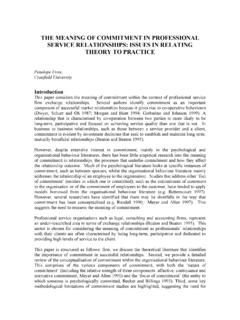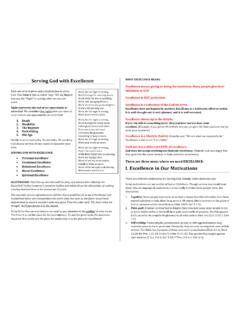Transcription of ARMY CIVILIAN CORPS NEW EMPLOYEE HANDBOOK
1 army CIVILIAN CORPS . NEW EMPLOYEE HANDBOOK . WELCOME to the army CIVILIAN CORPS ! It is an exciting time to be a part of the army and supporting its worldwide mission. The duties you perform are important and may affect Soldiers in the field or at home in one way or another. This HANDBOOK contains important information that will help make your transition to the US army CIVILIAN CORPS a success. For your convenience, it is divided into sections by topic. As time permits, you may view the HANDBOOK in its entirety or select topics of interest to you. The army exists for one reason: to serve the Nation. The army CIVILIAN CORPS exists to support the Constitution of the United States, the Nation, the army , and its Soldiers in war and at peace.
2 2. TABLE OF CONTENTS. # SECTION TITLE Page #. 1. History of the Civil Service and its Employees 4. 2. Oath of Office 6. 3. army CIVILIAN Creed 7. 4. The army Structure 7. 5. army Customs and Traditions 8. 6. Military Rank and Insignia 11. 7. army Knowledge Online 12. 8. Common Access Card 14. 9. Federal Employees Compensation Act (FECA) 15. 10. Benefits and Entitlements 15. 11. Appropriated Appointment Types 23. 12. Payroll Information 25. 13. Salary Increases 25. 14. National Security Personnel System (NSPS) 26. 15. Holidays 27. 16. Work Schedules and Working Conditions 27. 17. Premium Pay 29. 18. Leave Entitlements 31. 19. Performance Management 36. 20. Labor-Management Relations 37. 21.
3 Discrimination 39. 22. EMPLOYEE Professional and Self Development 40. 23. Internet Resources 42. 3. SECTION 1. History of the Civil Service and its Employees Soldiers and civilians have been working alongside each other since the Revolutionary War. In 1775, the first army civilians were employed as clerks, skilled tradesmen or craftsmen, physicians, teamsters and unskilled laborers. Just as the army s missions and demands upon it have grown more complex, so too have the positions that civilians occupy. Whether they are human resources specialists, historians, supply clerks, lawyers, physicians, contractors or food service workers, civilians perform vital military support functions. Without them, the ability to accomplish the mission would be seriously impaired, and by extension, national interests would not be served.
4 During the Civil War, 25,000 CIVILIAN trainmen, dispatchers and superintendents ran the military railroads that transported supplies to troops in the field. Union hospitals were staffed by more than 12,000 military and CIVILIAN employees, and more than half of the surgeons in the army were civilians. Military telegraph and several engineer construction CORPS that was exclusively or predominantly civilians contributed significantly to the war effort. Prior to 1883, using the patronage system, the Federal bureaucracy was staffed with cronies . of the incoming administration. The assassination of President James Garfield in 1881 by Charles Guiteau, a disappointed office-seeker, caused such a clamor that the old patronage system had to be reformed.
5 The history of public Civil Service has its origins in the Pendleton Act of 1883, or commonly known as the Civil Service Act of 1883. This act regulated and improved the Civil Service and its CIVILIAN employees. In the late 1930 s, Franklin D. Roosevelt s Administration strengthened the merit principle, giving support to positive personnel programs and enhancing the positive leadership of the Civil Service Commission. Roosevelt signed two Executive orders that marked the beginning of modern personnel administration in the Federal Government. On November 26, 1940, Roosevelt also signed the Ramspeck Act that paved the way for an unprecedented extension of the merit system that included competitive service, to more than 182,000 permanent positions, almost all the non-policy determining positions in the executive CIVILIAN service.
6 Civilians served with distinction in research and development, intelligence, logistics, communication and medicines during World War I and World War II. Harry S. Truman became President after the death of Roosevelt in 1945. That same year brought the end of World War II hostilities, and the Civil Service Commission faced the task of drastically reducing the huge wartime CIVILIAN workforce. An employment and advisory service was established to assist returning veterans. Applicants for Civil Service positions were accepted only from persons with veteran preference entitled to have examinations reopened and from certain persons separated as a result of a reduction in force. 4. By 1948, Public Law 617 was enacted and affirmed the Commission's war-developed policy of hiring the physically handicapped.
7 It banned discrimination against physically handicapped persons in filling any positions whose duties they could perform efficiently without endangering themselves or others. The Commission, with its World War II experience still fresh, entered into agreement with the army and other Federal agencies, giving them authority to make emergency-indefinite appointments not leading to permanent status at the start of the Korean War in 1950. The Federal service experienced urgent recruiting needs due to the war. The John F. Kennedy administration had the responsibility for ensuring nondiscrimination and equal opportunity in the largest employment system in the nation; policies and practices were reviewed to ensure that they did not place barriers in employing women.
8 The Federal Salary Reform Act of 1962. was passed to address: 1) how much to pay Federal Civil Service employees and 2) on what basis this decision should be made. President Lyndon B. Johnson, by Executive Order 11246, assigned responsibility for Equal Employment Opportunity (EEO) in the Federal service to the Civil Service Commission. He declared that the Federal Government would provide equal opportunity for all qualified persons. Discrimination was prohibited in employment due to race, creed, color, or national origin. EEO would be a positive, continuing program in each executive department and agency (This led the way for the EEO Act of 1972 to take affirmative action to open employment opportunities within the framework of a long-established merit system of employment).
9 Johnson was also credited with creation of the Coordinated Federal Wage System in 1965. By the 1970 s the army made a positive shift in giving increased attention to army Civilians. It focused on administrative and personnel management, new policies and programs, and civilianization of military positions. Into the 1980 s, the army maintained that a strong peacetime CIVILIAN workforce was necessary not only to fulfill army mission needs, but also to ensure that the army was prepared for the first stages of war. It identified the need for CIVILIAN training and development programs such as the army CIVILIAN Training, Education and Development System. The army recognized the need for leadership training and developed many CIVILIAN Leadership courses to develop core leadership skills.
10 Since the early 1990 s, army civilians have deployed to the Balkans, Bosnia, Hungary, Macedonia, Kosovo, Kuwait, Iraq and Afghanistan in support of the national s defense commitments. Some are required to deploy during times of national emergency with the military units they support during peacetime. They perform equipment maintenance, real estate function, engineering, auditing, morale, welfare and recreation activities, safety, personnel 5. management, and other sustainment-related functions. Just as they always have, they will continue to write a proud and lasting legacy in our nation s defense. Theirs is a storied and sterling history of loyal and patriotic support not altogether unlike their military counterparts.

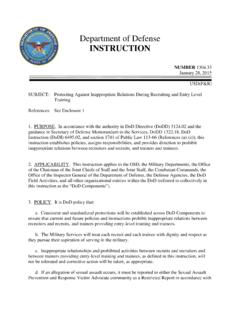
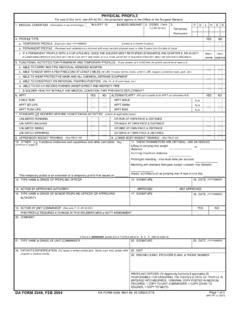
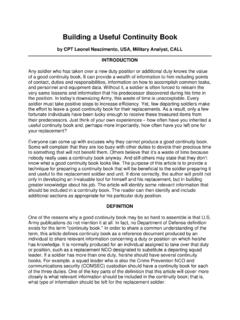
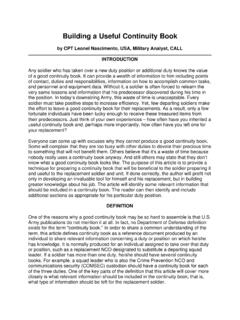
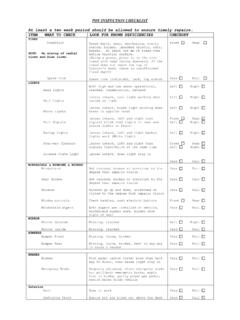
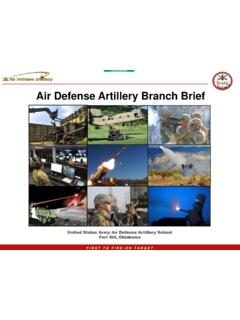
![Evangelism - Committed to Serve [Sermon Notes]](/cache/preview/8/d/8/b/7/f/b/4/thumb-8d8b7fb4726ff919904d7eba819431d6.jpg)
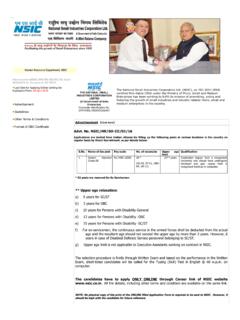
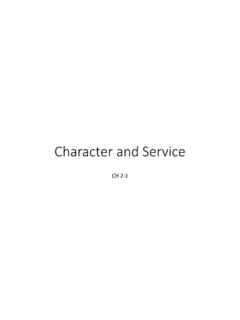

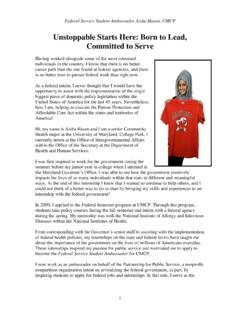
![Service - Committed to Serve [Sermon Notes]](/cache/preview/8/3/5/0/2/7/f/d/thumb-835027fdd3c246c70012da98ace7056c.jpg)

